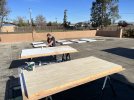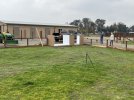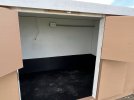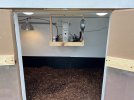Experience has shown this to not be the case. Remember @ZEROPILOT 's experience with the flex seal? The boat paint I used rubbed off in a few months, not years, and those were small sulcatas about 6-10 inches.The most time/years will be had from flex sealor marine paint.
The longest lasting coating I have found has been Pond Shield. When applied correctly and generously, it cures into a hard waterproof "plastic" and it holds up well under wet substrate and on the walls with tortoise shells rubbing on it.
@Markw84 also recommend Rustoleum "Counter top paint". I used that on the underside of the lids of a few night boxes and it works beautifully. It doesn't hold up to rubbing in high traffic areas or under tortoise feet, but it works great in areas that aren't walked on or rubbed on constantly. My one complaint is that it makes terrible fumes that take weeks to dissipate. I just ran a fan on it for a couple of weeks before use, and have had no problems. Of course, CA banned it, and we can't get it here anymore. Can't even order it and have it shipped in, just like the flood bulbs.



